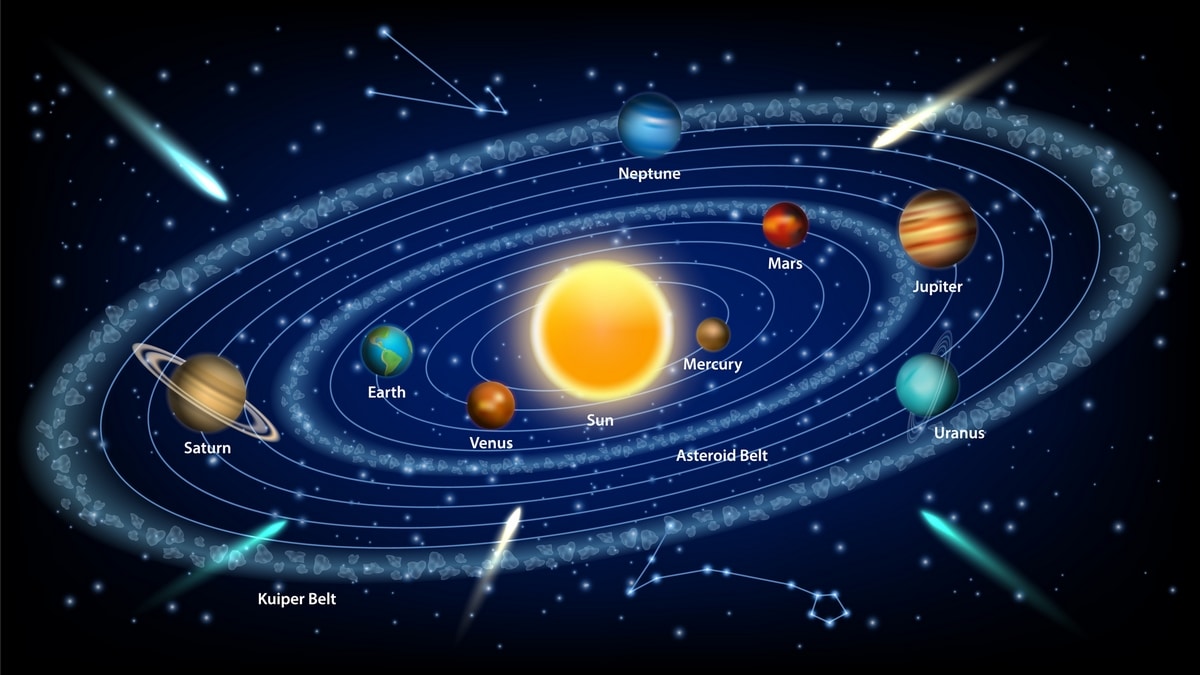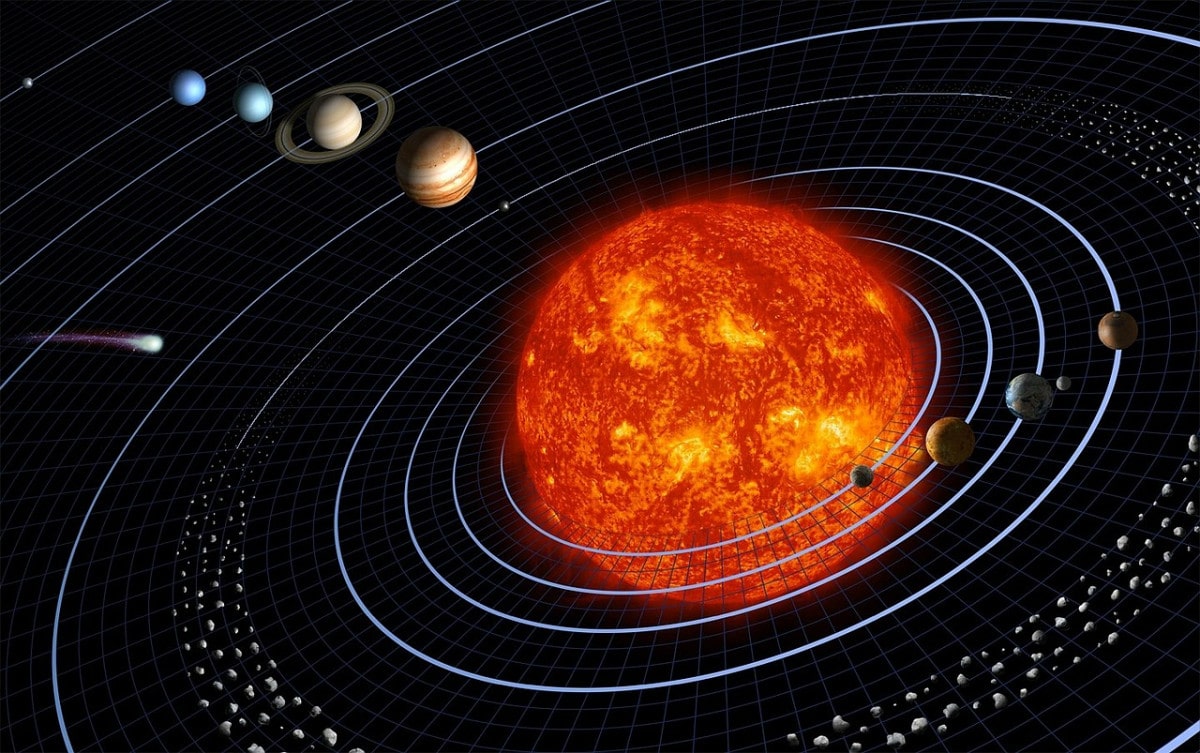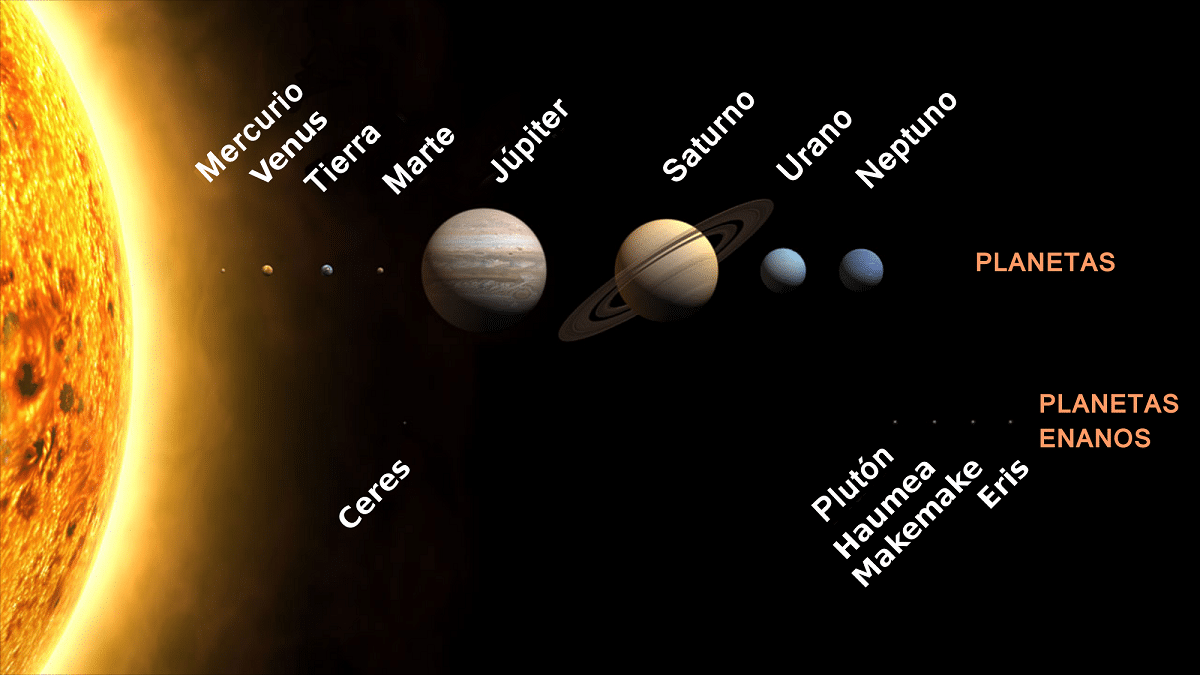
Our solar system, or planetary system as it is also called, is filled with a wide variety of celestial bodies, including the sun, planets, dwarf planets, and asteroids, and on Earth, life itself. Comets occasionally enter the inner solar system in highly elliptical orbits from the far side of the solar system. An planetary system is a group of non-stellar objects that are gravitationally bound in orbit around a star or star system. In other words, planetary systems describe systems with one or more planets, although these systems can also include celestial bodies such as dwarf planets, asteroids, natural satellites, meteorites, comets, and asteroids, as well as identifiable features, including circumstellar disks.
In this article we are going to tell you everything you need to know about the planetary system, its characteristics and importance.
What is a planetary system

A planetary system is our most common name for the solar system in which we find celestial bodies that are part of a binary star system and revolve around the sun, the Earth, and the planets.
The main characteristics of planetary systems are the following:
- In the case of the solar system, formed from a central star we know as the Sun and the celestial body that accompanies it.
- It consists of one or several central stars called a star system and different objects that orbit it.
- The eight planets of the solar system rotate gravitationally around the sun in elliptical orbits.
- The planets of the solar system they are arranged in orbit at increasing distances.
Types of planetary systems

Astronomers classify them by type. Certain types of stars are known to give rise to specific types of planetary systems and they are classified according to the spectral type of the host star. Main sequence stars like the sun account for the majority of discoveries in planetary systems. They are generally classified by the size and type of planets and their orbital configurations.
The most common hot Jupiter system found so far has a gas giant planet very close to the star, and also hot Neptune-type systems have been found.
Theories such as scattering have been proposed for the formation of large planets near their parent stars. Dust disks with large dust rings and comets are another common type of system.
As well protoplanetary disks were found still in the process of formation. Currently, very few systems with suitable analogs have been found on terrestrial planets close to their parent stars.
formation of planetary systems
The formation of planetary systems takes place in stages:
- In the first stage, known as interstellar cloud collapse, explains that these systems originated from gigantic molecular clouds composed of hydrogen, helium and lithium, as well as various heavy elements. From each of these clouds a star and possibly a planetary system would be born.
- The second stage is the formation of planetesimals, which are aggregates of matter that produce objects with greater mass. These particles combine in formations several kilometers long and the result is a large swarm.
- The third stage is called formation of planetary embryos, and take 1 to 10 million years to form. The collision caused them to split apart and gravity made their orbits very chaotic.
- The fourth stage is formation of the first giant planets, which are called planetary embryos and grow rapidly. The growth process produces a lot of heat so that the Earth can shine like a star. As it grows, final stages occur, including the formation of other giant planets, the formation of rocky planets, and the removal of excess gas.
Models

Throughout history there are different models of planetary systems, of which we can mention the most important:
- Aristotle's model: he thinks the most important thing, he says that the earth occupies the center of the universe. The earth is composed of four elements, earth, water, air and fire. He states that the sky area has concentric spheres around the earth, and each sphere has celestial bodies.
- Geocentric model: Ptolemy proposed a model with the Earth in the center, motionless, with the planets, the moon and the sun orbiting around it. Ptolemy proposed a geometric theory that mathematically explained the movements and positions of the planets, the sun, and the moon.
- Heliocentric model: The Sun is the center of the universe, and the Earth and the planets have circular paths around it. The stars are stationary, away from the sun, and the earth rotates on its own axis.
Examples
Some examples of planetary systems are as follows:
- Alpha Centauri: The closest to Earth. There is still no confirmation of the existence of worlds around their stars. It is 4,3 light-years from the solar system and has two stars around which the planets can orbit.
- Epsilon Eridani: This planetary system has been identified and is the closest to Earth. About 10,5 light-years from Earth, it has a star slightly smaller than the sun and a planet larger than Earth, formed in a disk of dust and an asteroid belt.
- Epsilon Indian: It consists of three stars, one larger, about two-thirds the mass of the Sun, and two smaller ones, called brown dwarfs.
- Tau Ceti: there is a sun-like star inside and 5 orbiting planets. According to scientists, this planetary system could be an option to host life because two of the exoplanets could be in the habitable zone.
Solar system
The Solar System is the planetary environment in which our Earth resides: a circuit of eight planets that constantly orbit a single star, the Sun.
Of course, we are not the only planetary system in existence. Throughout the galaxy and the universe, dynamic force systems exist around the gravitational force of one or more stars, so it is relatively safe to assume that such systems exist which cannot be calculated.
Our solar system is part of the local interstellar cloud, located within the local bubble of the Orion Arm, at about 28.000 light-years from the bright center of our galaxy, the Milky Way. It is estimated that it formed 4.568 million years ago, as a result of molecular clouds collapsing, creating a protoplanetary or star-encircling disk, a disordered group of matter that surrounds the sun. From there the different planets and astronomical objects of our space neighborhood will be formed.
Like other planetary systems, Solar System objects maintain elliptical orbits around the largest stars and thus have the strongest gravitational pull in the system. In our case, of course, the sun, a G-type star with a total diameter of 1.392.000 kilometers, containing 99,86% of the total mass of the solar system.
I hope that with this information you can learn more about the planetary system and its characteristics.
This information is fantastic and fascinating for me, all the topics related to the great UNIVERSE move me physically and mentally towards the immensity of the Solar System. Thank you and an effusive greeting...